A Meaningful K-12 Praxis
Meaningful K-12 Praxis
This article is an assignment abstract from Dr. Maryanne Berry’s SSU MA EDCT 552 Class
It’s really amazing to watch the evolution of American K-12 education gaining momentum seemingly on a daily basis. With all the distraction from the roll out of the Common Core, the seemingly endless tug-of-war over federal versus state control and the ideological debate over what knowledge has the most worth, several education institutions have been quietly going about the business of advancing K-12 education into the 21st Century. Maybe the billions spent on trying to improve test scores and increase graduation rates hasn’t been a waste after all.
It seems a few progressive educators have been learning from the shortcomings of past state and national programs and, combined with contemporary technology advances, have convinced enough policy makers and raised enough public and grant money to move K-12 education to the next level. Working from the bottom-up, students and parents are buying in.
High Tech High
High Tech High started in 2000 as a single charter high school founded by a coalition of San Diego business leaders and educators. Its members were concerned about the “digital divide” that resulted in low numbers of women and ethnic minority groups entering the fields of math, science, and engineering.
HTH has evolved into an integrated network of schools spanning grades K-12, housing a comprehensive teacher certification program and a new, innovative Graduate School of Education. Consisting of a network of twelve schools (five high schools, four middle schools, and three elementary schools) at three locations, the institute boasts of over 5,000 students, 500 employees and an annual operating budget of approximately $40 million.
The goal of the school is to prepare students to be aware, creative, quick-witted and technologically savvy, in a modern world. It has recast a lot of the outdated traditional schooling models such as classroom design, divisions between subjects, community isolation and hidden assessments.
In an interview with Larry Rosenstock he talked about the innovative teaching and learning elements that are the High Tech High model. The HTH purpose of public education, as Thomas Jefferson said, “Is to create a public.” They attest to the MIT motto of integrating “Head and Hand,” and believe in John Dewey’s philosophy that “understanding derives from activity.”
Some of their innovation techniques include the replacement of paper textbooks with personalized project-based learning; community services and internships; and blended-subject lessons. The teaching/learning experience is modeled for the demands of today’s work environment. As teacher said, “When students see the interconnectedness of the subjects they’re learning, they feel it’s more relevant, more meaningful, and more authentic than if they’re working in isolation.”
Projects form the core of the learning experience and one junior biology course is a five-week period, single forensics DNA barcoding project. In many cases, community members participate as experts, clients, or final judges. Teachers try to design the projects to mesh multiple subject areas, allow students the flexibility to choose their own focus that will, hopefully, serve a useful purpose beyond schoolwork.
Most classrooms are glassed-in pods within a single open space, a design that makes all the classrooms and common spaces feel connected while still providing a quiet space for work. The transparency is no accident; administrators here value teacher learning as highly as student learning so they have started their own graduate school of education — and they want students to see that. The 35-foot ceilings and the skylights and exposed metal beams make the space industrial yet inviting, a combination that evokes a sense of people and machines working in harmony.
Teacher meetings are a hallmark of HTH. Pairs of core-subject teachers (humanities/science-math) share the same two classes of students so they can collaborate on cross-disciplinary projects and better support students and each other. As Rosenstock says, “We have teachers meet every morning of every day in different teams. On Friday everyone in the whole school meets – on Wednesday they look at student’s work – on Tuesday and Thursday the teachers that share the same kids meet, and so on. So we have different configurations of common planning time which allows people to feel like, and behave like, they are teaching professionals. This has helped empower teachers who are an energetic bunch whose average age is thirty-one.
“Assessment is an episode of learning and not an endpoint. It’s going on one way or another just about every day,” says Rob Riordan where even a D is considered a failing grade. These episodes take the form of everything from quizzes to oral presentations to peer review. For the big projects, students exhibit their final product to the community.
Art teacher Jeff Robin has seen how all this hands-on experience pays off: Some of his science-minded students have gone to work in a blood lab at a nearby hospital, where Robin’s father is chief of pathology. Though they’ve signed on as technicians or research assistants, the teens have quickly found their coworkers calling on them for skills beyond their job descriptions, such as presentations and Web design. “They have all these skills that nobody else in the workplace has,” says Robin, “and the employers need them.”
Quest to Learn
In 2009 a unique school was founded in New York City. It is a public school, grades 6 to 12, in District 2 of the New York City Department of Education and is the result of a partnership between Institute of Play and New Visions for Public Schools. The school opened with 76 sixth graders.
It is based on the model of “game-like learning,” in which the curriculum is based on and mimics the design principles of games, increasing interactivity and fostering “systems thinking.” “[It] is organized specifically around the idea that digital games are central to the lives of today’s children and also increasingly, as their speed and capability grow, powerful tools for intellectual exploration.” The school’s curriculum is co-designed by teams of teachers; curriculum specialists; game designers; and students.
The concept for the school grew out of the idea that gaming and game design offers a promising new pedagogy for curriculum and learning. The designers of Quest to Learn developed an approach to learning that draws from what games do best: drop kids into inquiry-based, complex problem spaces that are built to help players understand how they are doing, what they need to work on, and where to go next.
In an interview with Quest to Learn instructor and game designer Al Doyle, he said that at the school they are not just playing video games they are actually building video games. They play education games to get inspiration and to “mod” modify those games. They are building their own worlds in teams with the kids assuming roles like director, scriptwriter and costume designer. All these roles force them to work collaboratively; it allows them to take knowledge from one domain and express it in another which is the definition of “higher order thinking.”
They are taught that a game is a “system” and a “system” is made of parts and parts are related to each other. When they look at fractions, for example, they are taught to see fractions as a system that has components – numerators and denominators; and how those components relate and what happens when one is changed. So “systems thinking” is their curriculum. It is not only based on NY state standards but it is also a very deep and rich way of looking at the world.
Content, which is based on NY state standards, is relevant, exciting, and empowering. In their first semester, students converted fractions into decimals in order to break a piece of code found in a library book; created location guide for a reality television series by using atlases and maps; and created video tutorials for a group of fictional inventors. This research and development document outlines the learning framework for the school, making the original design available to others in the field. Elements in development include a detailed curriculum map, a budget, and samples of student and teacher handbooks.
Quest to Learn is the brainchild of a professional game designer named Katie Salen and, like many people interested in education, has spent a lot of time thinking about whether there is a way to make learning feel relevant to students and at the same time connected to the world. Salen is also a professor of design and technology at Parsons the New School for Design and directs a research-based organization called Institute of Play, which examines the connections between games and learning.
Salen is unlike most authority figures as she is a gifted player of Guitar Hero and has been spotted playing her Nintendo DSi on the subway. Until a few years ago she knew little about educational pedagogy and was instead immersed in doing things like converting an ice-cream truck into a mobile karaoke unit that traveled around San Jose, Calif., with a man dressed as a squirrel dispensing free frozen treats and encouraging city residents to pick up a microphone and belt out tunes. This was a community-building sort of game — or as Salen describes it, “an interactive play-based experience” — as was the race she helped design in Minneapolis and St. Paul, in which randomly organized groups of people carried 25-foot-high inflatable playing pieces modeled after those used in the board game Sorry through the streets of the cities.
Working with Robert Torres, a learning scientist who is a former school principal, and a small team of curriculum and game designers, Salen spent two years planning Quest to Learn in conjunction with the education-reform group New Visions for Public Schools. Salen and Torres are at the forefront of a small but increasingly influential group of education specialists who believe that going to school can and should be more like playing a game which are participatory, immersive and fun.
Even when it doesn’t involve using a computer nearly every aspect of Quest to Learn is designed to be game-like. Grades are expressed in achieved levels of expertise, such as “pre-novice,” “novice,” “apprentice,” “senior” and “master.” They do things like defeat villains and help struggling aliens. They work mostly in groups to overcome the challenges created by a collection of resident game designers. The principles are similar to those used in problem-based learning, a more established educational method in which students collaborate to tackle broad, open-ended problems, with a teacher providing guidance though not necessarily a lot of instruction. But at Quest to Learn, the problems have been injected with creativity and fantasy.
A lesson becomes a quest once it has been modified by game designers. Students still have to take pre-algebra, basic physics, ancient civilizations and writing but they do so in integrated classes with names like Code-worlds — a hybrid of math and English class — where the quests blend skills from different subject areas. For example, students have balanced the budget and come up with ideas for an imaginary community called Creepytown, and have designed blueprints for a Troggle (little creatures) village. The students still have nightly independent and weekly reading-comprehension assignments and plenty of work with pencils and paper; but they also record podcasts, film and edit videos, play video games, blog avidly and receive video messages from aliens.
They also build their own games, sometimes designing board games using cardboard and markers and lots of tape. However most of the time they invent games for the computer. It’s believed that building a game — even the kind of simple game a sixth grader might build — is equivalent to building a mini-world, a dynamic system governed by a set of rules, complete with challenges, obstacles and goals.
Game design can be an interdisciplinary exercise involving math, writing, art, computer programming, deductive reasoning and critical thinking. It is training to understand and design the complicated systems that run the world.
It is still too early to say if this educational approach will actually work or if it can be adapted to other schools but Quest to Learn is the “tip of the spear” about the heated national dialogue about what skills today’s learners most need to prepare them for success in a rapidly evolving, digitally mediated world.
In March, Arne Duncan, the secretary of education, released a draft National Educational Technology Plan that supports more experimentation in K-12 education that suggests, is a “new kind of R.& D. for education” that encourages bold ideas and “high risk/high gain” endeavors — possibly even a school built around video games pedagogy.
![]()
![]() Quest to Learn is now beginning its second year, with about 145 sixth and seventh graders, all of whom were admitted by a district-wide lottery. (The intention is to add a grade level each year until it is a 6th-through-12th-grade school; Quest to Learn recently relocated to a larger but equally unmodern building in Chelsea.) Operating on a public-school budget but powered by additional grants from the MacArthur Foundation and the Bill and Melinda Gates Foundation, among others, it is a well-financed and carefully watched educational experiment concerning children, video games and the thrumming, largely unexplored force field between them.
Quest to Learn is now beginning its second year, with about 145 sixth and seventh graders, all of whom were admitted by a district-wide lottery. (The intention is to add a grade level each year until it is a 6th-through-12th-grade school; Quest to Learn recently relocated to a larger but equally unmodern building in Chelsea.) Operating on a public-school budget but powered by additional grants from the MacArthur Foundation and the Bill and Melinda Gates Foundation, among others, it is a well-financed and carefully watched educational experiment concerning children, video games and the thrumming, largely unexplored force field between them.
Source Articles
http://www.hightechhigh.org/schools/HTH/
http://www.edutopia.org/collaboration-age-technology-high-tech
http://www.instituteofplay.org/

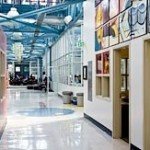


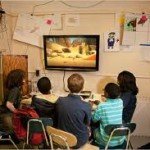
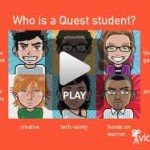

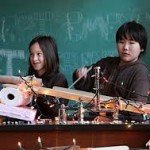

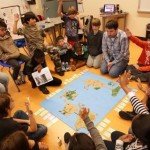
Recent Comments